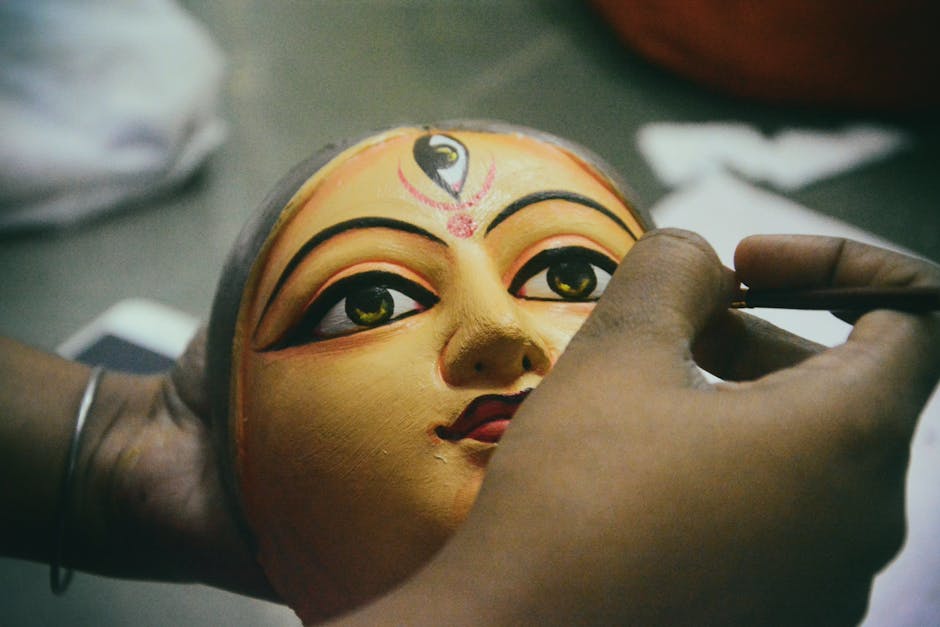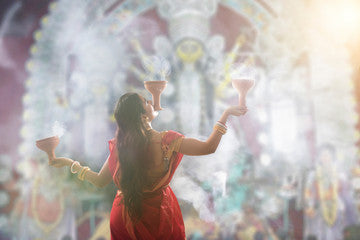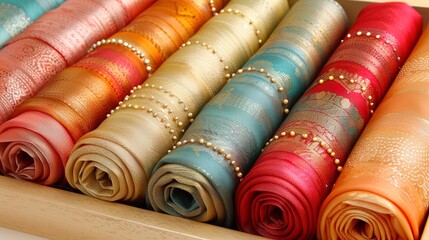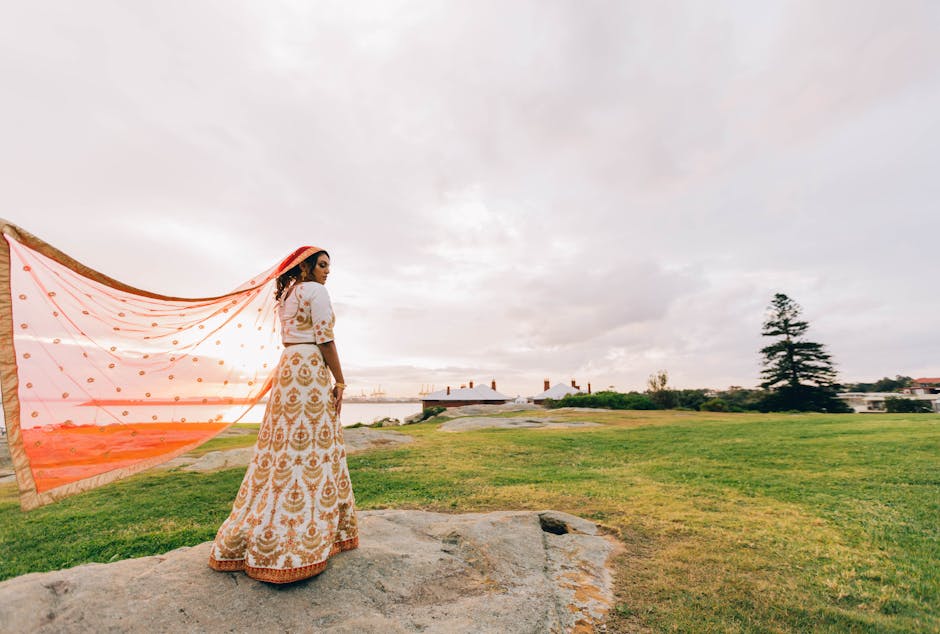The Timeless Elegance of Bengali Handloom Sarees: A Journey Through Tradition
Introduction to the Bengali Handloom Saree
Bengali handloom sarees are more than just clothing; they’re a rich tradition woven into the very fabric of Bengali culture. These sarees are famous for their intricate designs and the high-quality fabric that comes right from the looms of skilled artisans. They stand out for their unique patterns, vibrant colors, and the incredible craftsmanship that goes into making each piece. Originating from different parts of Bengal, each type of saree, be it the Tant, Jamdani, Baluchari, or Kantha, carries its own story, history, and heritage. Wearing a Bengali handloom saree isn’t just about donning a piece of cloth; it’s about embracing a piece of art that has been passed down through generations. It’s about keeping alive the traditions and the stories of the weavers who spend days, even months, creating a single saree with love, care, and perfection.
Historical significance of the Bengali handloom saree
The Bengali handloom saree is not just a piece of clothing; it is a tale of tradition woven into fabric. This tradition has roots deep in the history of Bengal, dating back to the Mughal era. Back then, the craft of weaving these sarees was not merely a job; it was an art passed down through generations, with each family adding their unique touch to the designs. The finest example of this tradition is the Jamdani saree, recognized by UNESCO as an Intangible Cultural Heritage of Humanity. This recognition underlines the global importance of the craftsmanship and intricate designs unique to Bengali handloom sarees. In essence, each saree is a canvas displaying the rich cultural legacy of Bengal. They were, and still are, a symbol of sophistication and status. Beyond their beauty, these sarees capture the spirit of Bengal’s history, its struggles, and its pride. Wearing a Bengali handloom saree is not just about fashion; it’s about carrying a piece of Bengal’s history with you.
The art of weaving: A behind-the-scenes look
Weaving Bengali handloom sarees is an art form that has been passed down through generations. It starts with selecting the finest threads. Artisans use silk, cotton, or a mix, depending on the saree type. Then comes the design phase. Traditional patterns are often inspired by nature and the rich cultural heritage of Bengal. The weaver’s loom plays a crucial role next. This is where the magic happens. Skilled weavers manually operate these looms, a technique that requires patience and precision. The process can take anywhere from a few days to weeks, depending on the saree’s complexity. Every step, from dyeing the threads to setting up the loom and the actual weaving, is done with utmost care. This meticulous process results in not just a piece of clothing but a masterpiece that carries centuries of tradition and the weaver’s touch.
Understanding the different types of Bengali handloom sarees
When we talk about Bengali handloom sarees, we’re diving into a rich tradition of craftsmanship and beauty. First off, let’s start with the Jamdani, a UNESCO-recognized masterpiece. It’s known for its intricate designs woven directly into the fabric, making each piece unique. Then, there’s the Tant saree, perfect for the sultry Bengal climate due to its lightweight and breathable cotton. The Baluchari saree steps in with its dramatic stories from Indian mythology, captured in silk threads across its border and pallu. For silk lovers, Murshidabad silk offers a glossy, smooth texture with subtle prints, ideal for those who prefer elegance. Lastly, Kantha sarees showcase simple yet profound embroidery, a testament to artistic thrift and creativity, turning plain cloth into a canvas of vibrant tales. Each of these sarees brings its own flavor to the table, offering something for every mood and occasion.
The cultural symbolism of colors and motifs
Colors and motifs in Bengali handloom sarees don’t just make them look beautiful; they tell stories, celebrate culture, and symbolize emotions. Let’s break it down. The use of red, often seen in wedding sarees, stands for prosperity and marital bliss in Bengali culture. White, adorned with red borders, is traditionally worn during mourning, showing the depth of loss and reverence for the deceased. Green, a symbol of life and energy, is a popular choice during the spring festival of Basant Panchami. Now, the motifs. The fish motif, a symbol of fertility and abundance, reflects Bengal’s deep connection to its rivers and fisheries. The lotus motif, representing purity and beauty, is commonly seen in sarees worn for religious and auspicious occasions. Peacocks, symbolizing grace and beauty, often grace the pallu, adding an element of elegance. The confluence of these colors and motifs on the canvas of a saree speaks volumes about the Bengali ethos and tradition. So, when you see a Bengali handloom saree, remember, it’s not just attire, it’s a narrative woven in threads of tradition.
The intricate craftsmanship behind each saree
Every Bengali handloom saree tells a story of meticulous craftsmanship. Artisans spend anywhere from a week to a few months weaving a single saree, depending on its complexity. The process begins with the selection of quality threads. These threads are then dyed into vibrant colors, a task requiring its own set of skills to ensure the hues are just right. Next comes the weaving. This step is where the magic truly happens. Using traditional wooden looms, weavers bring the saree to life, intricately interlacing threads to create patterns that have been passed down through generations. Some sarees, like the famous Jamdani, are known for their detailed motifs, which are woven directly into the fabric as it comes to life on the loom. It’s a labor of love, with each saree being a unique piece of art, reflecting not just the skill of the weaver but also a rich cultural heritage. This dedication to craftsmanship is what makes each Bengali handloom saree not just a garment, but a timeless piece of elegance.
How to style a Bengali handloom saree for different occasions
Crafting an elegant look with a Bengali handloom saree hinges on the event you’re attending. Let’s break it down into simple scenarios to nail that perfect attire every time. For weddings and formal gatherings, choose silk or muslin sarees with traditional motifs. Pair these with gold or pearl jewelry to elevate the elegance. Opt for a neat bun or soft curls for your hair. At casual events, go for cotton or tant sarees with less intricate designs. These can be matched effortlessly with silver jewelry or handmade accessories for a laid-back vibe. Keep your hairstyle simple; open hair or a messy bun works wonders. For office or professional settings, stick to lightweight cotton or handloom silk sarees with minimal patterns. A sleek bun and subtle makeup, paired with a blazer or a formal jacket, will give you a sharp, professional look. Festive occasions demand bright colors and rich textures. Choose vibrant hues and bolder designs. Accessorize with statement jewelry and go for a traditional hairdo like a braid adorned with flowers to capture the festive spirit.
Remember, the right blouse and petticoat are crucial for any occasion. A well-fitted blouse enhances your saree’s look, while the right petticoat maintains the saree’s shape and drape. Your footwear shouldn’t be overlooked either. High heels work best for formal events, while for casual outings, you might prefer something more comfortable like flats or sandals. Experimenting is key to mastering the art of styling a Bengali handloom saree for any occasion.
Preserving the tradition: Challenges and efforts
Preserving the tradition of Bengali handloom sarees is no easy feat. The artisans face numerous challenges, from the high cost of raw materials to the invasion of cheaper, machine-made alternatives. Despite these hurdles, efforts to keep this ancient art form alive are strong. NGOs and government bodies are stepping in to provide support. They offer workshops to hone the skills of weavers and introduce them to sustainable practices. There’s also a push to market these sarees globally, tapping into the power of social media to reach fashion enthusiasts who value authenticity over mass production. Local communities are banding together, too, celebrating their heritage at festivals and fairs where handloom sarees take center stage. The journey isn’t simple, but the determination to keep the tradition thriving is stronger than ever.
Caring for your Bengali handloom saree: Tips and tricks
Taking care of a Bengali handloom saree is like preserving a piece of art. These intricate textiles require a bit of special attention to keep their elegance alive for years. First, always dry clean your saree for the first few washes. It helps in retaining the colors and the fabric’s integrity. If you decide to wash it at home later, go for a gentle hand wash in cold water, avoiding harsh chemicals and detergents. Secondly, never wring out a handloom saree; it’s like giving the delicate fibers a workout they didn’t sign up for. Instead, gently press out the water or blot it with a towel. For drying, avoid direct sunlight as it might cause the color to fade. Lay it flat or hang it in a shaded area. Thirdly, ironing should be done with caution. Use a warm iron and preferably iron on the reverse side of the saree to protect its sheen. Lastly, storage is key. Wrap your saree in a soft cloth, like muslin, and store it in a cool, dry place. If possible, refold the saree every few months to avoid creases turning into permanent marks. By following these simple yet effective tips, you ensure your Bengali handloom saree remains as captivating as the day you first draped it.
Conclusion: Why Bengali handloom sarees stand the test of time
Bengali handloom sarees endure because they embody elegance, tradition, and unmatched quality. These sarees are more than just clothing; they are a testament to the rich history and culture of Bengal. Their uniqueness lies in the intricate designs and patterns, each telling a story of its own. Crafted with care and dedication, these sarees reflect the skilled craftsmanship of weavers who have passed their knowledge down through generations. Whether it’s the softness of muslin, the richness of silk, or the comfort of cotton, Bengali handloom sarees cater to every taste, making them timeless. Moreover, their versatility ensures they fit in at weddings, festivals, and casual days out alike, proving that true style never fades. So, when you choose a Bengali handloom saree, you’re not just choosing a piece of clothing, but a piece of heritage that holds its beauty and value over time.






